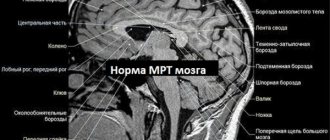Kinds
The disease can be either congenital or acquired. A disorder that manifests itself from childhood affects the entire subsequent life of a person and is rarely treatable. The child grows up antisocial, withdrawn, and displays aggression.
The following forms of the disease are distinguished:
- asthenic;
- euphoric;
- aggressive;
- apathetic;
- paranoid;
- explosive.
The pathology is chronic in nature, exacerbation occurs during critical periods of life, such as:
- puberty;
- menopause, childbirth;
- severe stress;
- infectious diseases.
Under favorable conditions, a period of remission is observed. A person develops stable compensation for his personality and his ability to work is normalized. In the absence of treatment, the disease continues to progress, leading to the patient’s complete inability to adapt to the conditions of society.
Organic disorder is divided into 5 types:
- Emotionally labile.
- Asthenic disorder.
- Anxiety disorder.
- Delusional psychopathy.
- Schizophrenia-like disorder.
Often the person does not recognize the presence of the disorder and avoids treatment. Timely therapy can improve his condition and slow down the progression of the pathology.
Emotionally labile disorder of organic nature
The disease is characterized by constant or periodic attacks of nervousness. The person complains of incontinence towards other people, feels physical discomfort, and often notes manifestations of pain and decreased performance.
The main causes of this disorder are severe hypertension or cerebral circulation disorder. In rare cases, a stroke leads to pathology.
Emotionally labile disorder is characterized by:
- migraine attacks;
- photophobia;
- general weakness;
- decreased physical activity;
- there is a disturbance in concentration;
- the person often cries and becomes irritable.
Before starting treatment, the doctor assesses the severity of the organic disorder and determines the cause of the disease. Drug therapy includes nootropic drugs, multivitamin complexes and nonspecific stimulants. To restore performance, a course of physiotherapy is prescribed.
Asthenic organic disorder
The disease is a disorder of the psychoemotional state, accompanied by increased nervousness and cerebrasthenic symptoms.
Damage to the blood vessels of the brain can provoke the development of pathology. In the early stages, the disease manifests itself as cerebral asthenia - even after slight physical or mental stress, severe fatigue occurs. If left untreated, the disease progresses to vascular dementia.
The main risk factors are hereditary predisposition and constant stress.
The pathology has the following clinical picture:
- severe nervousness, sensation of pain of any kind in different parts of the body;
- rapid decline in performance;
- hysterics;
- muscle weakness;
- migraine;
- sleep disorder
Asthenic organic disorder is determined only if a person does not have deep disturbances of consciousness. In addition to a psychological examination, echocardiography, CT and ultrasound are required to make a diagnosis.
Treatment is aimed at restoring normal cerebral circulation. The patient is prescribed tonics, adaptogens, nootropic drugs and antidepressants.
Organic anxiety disorder
The disease is accompanied by depression. Violation of the psycho-emotional state begins with anxiety and panic attacks. The development of pathology can be provoked by an acute cerebrovascular accident, myocardial infarction or ischemic disease.
Anxiety disorder is accompanied by the following symptoms:
- tremor of the limbs;
- spasms, cramps of the abdominal muscles, especially in the epigastric region;
- muscle tension around the scalp;
- tachycardia;
- dyspnea;
- pale skin followed by redness;
- dry mouth.
The treatment regimen includes tranquilizers that have a sedative or hypnotic effect. The duration of drug therapy should not exceed 2 weeks. In severe cases, antidepressants and antipsychotics are additionally prescribed.
Delusional psychopathy
Personality pathology is characterized by the presence of constant false ideas and beliefs in a person. The causes of the disease are unknown. In theory, the disease is hereditary in nature, the symptoms worsen against the background of severe stress, after injury, or alcohol abuse.
The main symptom is recurrent or persistent episodes of delirium. A person's pursuit of a particular idea or thought distinguishes psychopathy from schizophrenic disorder. The patient is prescribed antipsychotics as treatment. If a person is depressed, anxiolytics and antidepressants are added to the treatment regimen.
Schizophrenia-like disorder
Organic schizophrenia-like personality disorder is a rare disease, occurring in 5% of cases, which is accompanied by epilepsy and psychosis. The pathology develops as a result of brain damage by encephalitis in the parietal and temporal lobes.
A person comes up with delusional visions of a theological nature, suffers from depression and a disorder of consciousness. In particular cases, paranoid psychosis is observed. The patient falls into emotions, ecstasy, and complains of auditory hallucinations.
Clinical signs
Not everyone knows what organic brain damage is. The main signs of the disorder are:
- Apathy.
- Absent-mindedness.
- Logoneurosis.
- Impaired concentration.
- Lethargy.
Organic brain damage in older people often manifests itself as dementia syndrome, when a person begins to forget the names of loved ones, important dates, and words. With the further development of the pathology, the victim cannot think adequately, form sentences, or express emotions.
Stages and degrees
Organic personality disorder is a pathology that progresses slowly with a gradual deterioration in the general condition of a person.
The disease varies in severity:
- light;
- moderate;
- heavy.
In the early stages of progression, the pathology is manifested by general weakness and decreased performance. The disease is of moderate severity, manifested by physical discomfort, periodic or constant headaches. Severe manifestations of delirium, antisocial behavior and prolonged depression with further progression of the pathology create a threat to the patient’s life.
The stages of development of organic personality disorder vary depending on the form of pathology:
| Name | Stages of development and manifestation |
| Asthenic | 1. At the initial stage, rapid physical and emotional exhaustion is observed. 2. As the disease progresses, persistent hypertension occurs. 3. Muscle weakness appears. 4. Frequent mood swings, irritability, photophobia, and severe headaches are observed. |
| Explosive | 1. The person becomes irritable. 2. Emotional stability is lost. Resistance to stress decreases. A person can easily fall into hysterics and cry for a long time. 3. Social maladjustment occurs. |
| Aggressive | 1. The patient shows causeless aggression towards material objects and surrounding people. 2. He is dissatisfied with life and shows constant dissatisfaction. 3. May cause harm to yourself or others. |
| Paranoid | 1. In the early stages of the development of the disease, suspicion and anxiety appear. 2. Constant anxiety develops into a false sense of impending danger. 3. A person stops being interested in events in the world, does not leave home, gives up hobbies and work. Lives in constant fear and anticipation of attack. |
| Euphoric | 1. There is a constant feeling of joy, the person feels happy. 2. Behavior becomes inappropriate and infantile. 3. As the pathology progresses, the person gets rid of self-criticism and does not want to take responsibility for his actions. |
| Apathetic | A person gradually loses interest in life and shows indifference to current events. As complications such as depression develop, suicidal thoughts may appear. |
In particular cases, the disease can occur in a mixed form, combining many clinical manifestations of an organic disorder. In the terminal stage, regardless of the type of pathology, in the absence of treatment, vascular dementia and decreased mental activity are observed.
Goals of psychotherapeutic treatment:
- increasing the patient’s subjective psychological comfort,
- improving quality of life,
- fight against depression,
- elimination of sexual disorders,
- treatment of obsessive-compulsive conditions,
- teaching the patient socially acceptable behavior patterns.
Psychotherapy is carried out in the form of a series of personal conversations with a psychiatrist, followed by exercises aimed at learning new behavior patterns. Family, group and individual psychotherapy is used. Working with the patient’s family is especially effective, as a result of which it is possible to improve relationships with relatives and ensure their support for the patient.
Hospitalization of a patient in a specialized institution is carried out when there is a threat of suicide or the patient is highly aggressive and poses a danger to others.
There is no complete prevention of organic personality disorders. It is important to pay great attention to the prevention of injuries during childbirth, industrial and domestic injuries, medical examination of the population in order to timely detect pathology for early treatment. After identifying the disease, it is necessary to create conditions for stabilizing the condition and work with the patient’s environment.
Symptoms
Organic personality disorder is a disease with the following clinical picture:
- inability to concentrate on the work process;
- severe emotional instability, lack of self-control: apathy can be interrupted by bouts of euphoria or aggression;
- any changes in the usual lifestyle cause severe irritation;
- a person ignores social norms of behavior: steals unnecessary things, displays inappropriate sexual behavior, may attack another person;
- abuse of food, lack of personal hygiene;
- in particular cases, it is possible to develop paranoia, increased suspicion, fixation on an idea, often of a religious nature;
- desire to evaluate someone else's behavior, change in speech.
Usually, at the initial stage of pathology progression, a person begins to forget about small everyday things or spoken words, which indicates developing dementia.
The clinical picture may vary depending on the causes of organic psychosis:
- Cerebrovascular accident . Rapid physical exhaustion is observed, the person reacts sharply to external stimuli, and may cry for no reason. Hypochondriacal symptoms appear.
- Head injury, severe infectious disease. In addition to decreased performance, weather dependence is observed. A person does not tolerate sudden changes in temperature.
- Epilepsy. Egocentrism, unrestrained aggression, and a sad and angry mood appear. The person becomes vindictive, but tries to be as polite as possible. Pays excessive attention to small details.
Delusional psychopathy and schizophrenia-like disorder are different. In the first case, the disease is expressed in persecution mania, a fixed idea about the presence of a severe pathology leading to imminent death. In schizophrenia-like disorder, visual hallucinations dominate, and there is a disorder of thinking without memory impairment.
Symptoms of an organic disorder
Anxious personality disorder
To understand how “unbalanced” a personality is, the doctor determines the criteria for psychopathy. The symptoms of the disease are extensive and do not appear immediately.
Signs of an organic disorder
| Criterion | Peculiarities |
| Emotionality | Violations are manifested by instability, fluctuations in emotions, and mood swings. Sometimes apathy or anger, irritability or euphoria are observed. The person becomes aggressive. Speech contains inappropriate witticisms or flat jokes |
| Cognitive | Paranoid ideas and manic suspicion appear. A person becomes pathologically fixated on one activity. Divides others into good and bad |
| Speech | If there is a violation, slowness and viscosity of spoken phrases are observed. The individual tends to insert colorful adjectives into conversations and be overly thorough |
| Sex | Increased libido or changes in sexual preferences |
| Activity | A person is not capable of performing long-term, purposeful responsibilities, both in the home and professional sphere. Activities that do not bring immediate results are especially annoying. |
Gradually, the patient's behavior takes on an antisocial character. Restrictions are disinhibited, the individual becomes hypersexual and prone to gluttony. He develops an aversion to personal hygiene. Those who are aggressive engage in illegal acts.
Emotional instability
To classify a disease as an organic personality disorder, it is necessary to have 2 or more symptoms that are observed for six months. Depending on the combination of criteria, several types of damage are distinguished: disinhibited, apathetic, labile, paranoid, aggressive, mixed.
Reasons for appearance
Organic personality disorder is a disease caused by the following disorders:
- Traumatic brain injuries. Mechanical damage to the frontal lobe of the brain can trigger the development of any type of organic disorder. Rupture of blood vessels, areas of ischemia, or disruption of communication between neurons leads to memory impairment, decreased mental activity, and emotional instability.
- Brain tumors. Neoplasms of a malignant and benign nature, as they grow, compress the brain in the cranium. As a result, the development of delusional psychosis and schizophrenia-like disorder is possible.
- Infectious diseases: encephalitis, meningitis, HIV infection, neurosyphilis. They can provoke emotionally labile or asthenic pathology. Neurons stop performing their function, which leads to dementia and the development of fatigue. A person loses resistance to stress, which causes him to lose control of his emotional state in unfavorable conditions.
- Cerebral circulatory disorders and other cardiovascular pathologies. Lead to the development of oxygen starvation of cells and ischemia. The transmission of nerve impulses between neurons is disrupted. As a result, an emotionally labile pathology and anxiety disorder develops.
- Alcohol and drug abuse. Intoxication of neurons leads to dysfunction of the brain, changes in the consciousness and behavior of the patient. As a result, the development of delusional psychosis is observed.
- Epilepsy. Becomes the cause of the development of schizophrenia-like personality disorder. The disease affects the temporal and parietal lobes, as a result of which memory deteriorates, habitual behavior patterns change, and thinking disorders occur.
In rare cases, an organic disorder develops as a complication of diabetes. In this situation, an asthenic form of the disease is formed due to an increase in blood glucose. A person gets tired quickly; due to an excess of sugar in the blood, brain cells stop working normally. As a result, changes in the psychoemotional state and impairment of cognitive functions are observed.
Causes of the disorder
An organic disease that affects the structures of the brain and nervous system can occur for many reasons. These include:
- Disorders associated with pathologies of the heart, blood vessels and nerves. They are more common in atherosclerosis, Alzheimer's disease, and parkinsonism. Through the narrowed vascular lumen, a sufficient amount of oxygen does not reach the brain, which leads to the gradual death of nerve cells.
- Disorders caused by diseases of internal organs. Changes may occur due to pathogenic processes in the liver or kidneys (eg, hepatitis, cirrhosis, fibrosis). With the accumulation of toxic substances, a high concentration of which negatively affects the functions of the entire body, neural connections are destroyed. Dementia is treatable if detoxification is started promptly.
- Intoxication of the body (with severe alcoholism, drug addiction).
- Head injuries that appear either immediately or later, and remind you for the rest of your life. Patients suffer from periodic attacks of dizziness and cephalalgia. In severe cases, problems with hearing and vision are observed. Paralysis of the limbs, tics, and episyndrome may develop. Sometimes traumatic brain injuries in newborns occur during childbirth. The consequences of such injuries can be quite severe and threaten not only the health, but also the life of the child.
Infectious diseases (abscess, meningitis, encephalitis), cyst growth, for example, echinococcosis, are provoking factors of the disease.
Infectious lesions
Quite a lot of infections lead to the development of organic brain lesions. This:
- Coxsackie viruses are a common cause of aseptic meningitis.
- Herpes, which attacks the central nervous system, causing meningitis and encephalitis.
- Staphylococcus, which causes staphylococcal meningitis.
- Echoviruses that can infect almost any cell in the body.
In addition, HIV infection in advanced stages affects the central nervous system, manifesting itself as an abscess and leukoencephalopathy. Infectious brain disorders manifest themselves:
- Asthenia.
- Psychotic disorganization.
- Affects.
- Personality disorders.
- Obsessive-compulsive disorders.
- Hysteria, neuroses, hypochondria.
Vascular pathologies
Ischemic brain disease, hemorrhagic stroke, DEP (dyscirculatory encephalopathy) are diseases associated with vascular pathologies.
- Ischemia develops due to blockage of the vascular lumen by cholesterol plaques or blood clots.
- In a hemorrhagic stroke, an aneurysm ruptures, causing blood to leak into adjacent areas of the brain.
- DEP provokes a constant lack of oxygen due to diffuse damage to the cerebral vessels. The disorder is characterized by multiple small foci located throughout the surface of the brain.
Signs of brain damage:
- Severe pain in the head.
- Dizziness, the causes of which are initially unclear to the victim.
- Nausea.
- Nervousness.
- Sleep disturbance.
- Fainting.
- Numbness of the limbs.
- Cognitive impairment.
- Affective disorders.
- Parkinsonism.
- Difficulty swallowing.
- Voice change.
- Slurred speech.
- Blood pressure surges.
- Violation of stability.
Demyelinating diseases
Among demyelinating brain lesions, a diagnosis such as multiple sclerosis should be noted. This is a chronic autoimmune disease in which foci (scars) of sclerosis are formed throughout the central nervous system with the replacement of healthy tissue with connective tissue. The myelin sheaths of nerve endings gradually disintegrate, which is accompanied by swelling of the nerve fibers, impaired conduction of impulses, and the formation of sclerotic plaques. The disease affects young people and even children. The disease manifests itself:
- Reduced pain threshold.
- Paresis of the limbs on one side of the body.
- Numbness, weakness.
- Gait disturbance.
- Tremors of the hands and neck.
- Low-grade body temperature.
Poisoning
Serious poisoning of the body is caused by alcohol abuse, drug addiction, poisoning with drugs, mushrooms, heavy metals, arsenic, and combustion products of polyvinyl chloride. Each specific case manifests itself with certain symptoms.
For example, intoxication with psychotropic substances is characterized by the appearance of:
- Dizziness.
- Diarrhea.
- Headache.
- Decreased blood pressure.
- Chills.
Chronic intoxication causes nervousness, lethargy, and decreased performance. Cognitive impairments include decreased intelligence, impaired attention and memory.
Brain injuries
These are contact and intracranial injuries of the face, skull bones, membranes and substance of the brain. These include:
- Concussions, brain contusions.
- Fracture of the bones of the skull.
- Diffuse breaks and tears of axons.
- Compression of the brain.
- Intracranial and subarachnoid hemorrhage.
After such injuries, it is necessary to take into account that the brain may be damaged not only at the site of impact. The counter-impact force also plays a significant role, causing hydrodynamic vibrations that negatively affect the meninges.
Diagnostics
To establish the primary cause of the pathology, a comprehensive examination of the cardiovascular system is performed, paying special attention to cerebral circulation. There is no most effective method for diagnosing any type of organic disorder, since diseases differ in cause and clinical presentation.
To assess the condition of blood vessels and the general functioning of the brain, the following is carried out:
- Electroencephalography (EEG). Sensors are fixed on the scalp. They detect and record the electrical activity of the brain. The diagnostic method is used for epilepsy, trauma, and hemodynamic disorders. The cost of an EEG depends on the duration of the procedure: price for 30 minutes. is about 2000 rubles, while for 3 and 6 hours - 4500 and 6500 rubles. respectively.
- Magnetic resonance therapy. Allows you to take pictures of the brain and assess the condition of tissues in the presence of injury or tumor. When using a contrast agent, it is possible to monitor the blood supply to the organ and identify areas of ischemia. The cost of the examination varies from 3,000 to 8,000 rubles.
- Angiography. The condition and speed of blood flow in the cerebral arteries is assessed. The price of the procedure is about 5000-6000 rubles.
Instrumental diagnostics can be carried out in any hospital or private medical center that has modern equipment.
To assess the psycho-emotional state, other research methods are used:
- Conversation. During the conversation, the psychotherapist determines the degree of impairment of consciousness and memory, and identifies changes in behavior and speech. To assess memory, the doctor asks you to remember pictures or words in a given order. Consciousness and thinking are analyzed using drawings or individual leading questions. During the conversation, the psychotherapist monitors changes in the patient’s mood and behavior.
- It is a multidimensional questionnaire. The doctor asks certain questions and, depending on the answers, determines the person’s condition on various scales, such as hysteria, hypochondria, depression, paranoia.
- Rorschach test. The researcher asks the patient what is shown on 10 cards, 5 of which are drawn in black ink, 2 in red-black and 3 in color. The technique allows you to assess a person’s attitude to various situations.
- Thematic apperception test. Internal conflicts and interests are explored. There are 31 tables with different images. The patient is given 20 tables, for each of which he must make up a plot story.
A session with a psychotherapist costs from 1,800 rubles. The price of a comprehensive examination depends on the professionalism of the specialist and the number of tests performed.
To establish an accurate diagnosis, a long visit to a psychotherapist is required. Observation of a person lasts about 6 months, during which the doctor must note at least 3 symptoms of an organic personality disorder.
Disability group for personality disorder
Your case most likely corresponds to paragraph 7.4.1 of the appendix to Order N 1024n: 7.4.1 Affective disorders, minor, treatable with pharmacotherapy, with stable remission, not significantly affecting adaptation in the main areas of life - 10-30% There is no reason to say that it applies to your case case of paragraph 7.4.2: 7.4.2 Persistent prolonged or frequent affective disorders, moderately severe, with a total duration of more than 6 months per year, making it difficult to adapt in the main areas of life - 40-60% due to the lack of DOCUMENTARY CONFIRMATION of persistent prolonged or frequent affective disorders, with a total duration more than 6 months a year (due to the fact that during the year you have only 1 visit to a psychiatrist and there is an effect from the drug therapy during inpatient treatment).
Make the final decision on the advisability of undergoing an examination at the ITU bureau yourself - taking into account the above information. Registration of disability in simple language
When to see a doctor
If you suspect an organic disorder, you should contact a neurologist and psychotherapist as soon as possible.
It is imperative to conduct a comprehensive diagnosis of both the brain and the psycho-emotional state. A neurologist will help determine the root cause of changes in behavior patterns and deterioration in thinking. A conversation with a psychotherapist will improve the quality of life, stabilize mood swings, and prevent the development of depression and paranoia.
Often, patients with an organic disorder do not feel the presence of the disease, so they and their close relatives seek help late, when the pathology threatens the development of dementia. It is advisable to seek help from doctors in the early stages of the development of a psycho-emotional disorder, regardless of the type, when a person experiences causeless mood swings, irritability or inappropriate behavior.
Treatment of organic pathology and mental disorders
First of all, the cause of organic pathology should be established. Treatment tactics will depend on this.
In case of infectious pathology, antibiotics sensitive to the pathogen should be prescribed. For viral infections - antiviral drugs and immunostimulants. For hemorrhagic strokes, surgical removal of the hematoma is indicated, and for ischemic strokes, decongestant, vascular, nootropic, and anticoagulant therapy is indicated. For Parkinson's disease, specific therapy is prescribed - levodopa-containing drugs, amantadine, etc.
Correction of mental disorders can be medicinal and non-medicinal. The best effect is shown by a combination of both methods. Drug therapy includes the prescription of nootropic (piracetam) and cerebroprotective (citicoline) drugs, as well as tranquilizers (lorazepam, tofisopam) and antidepressants (amitriptyline, fluoxetine). To correct sleep disturbances, hypnotics (bromizoval, phenobarbital) are used.
Psychotherapy plays an important role in treatment. Hypnosis, auto-training, Gestalt therapy, psychoanalysis, and art therapy have proven themselves well. This is especially important when treating children due to possible side effects of drug therapy.
Prevention
Organic personality disorder is a disease associated with disruption of the brain. Therefore, the main measure to prevent psycho-emotional disorders will be timely treatment of injuries, infectious pathologies and cardiovascular disorders.
To avoid the development of pathology, it is recommended to adhere to the following rules:
- avoid stress;
- give up alcohol and drugs;
- do not abuse psychotropic drugs prescribed by your doctor, take strictly according to the indicated dosage;
- if there is a hereditary predisposition, undergo a preventive examination by a neurologist, cardiologist, or psychotherapist;
- adjust the diet;
- monitor blood glucose levels.
It is recommended to maintain a positive attitude, get plenty of rest, and maintain good hygiene.
What is organic personality disorder? Main symptoms and treatment
An organic personality disorder is a pronounced change in the patient's usual behavior, the cause of which is a disease with changes in the structure of the brain.
Organic personality disorder can manifest itself as disturbances in the emotional sphere, changes in life needs and priorities. Often this pathology is accompanied by a decrease in the ability to think and learn, and sexual disorders. Diseases that are caused by any obvious structural changes in the brain (or other organ) are considered organic. These changes can usually be detected using imaging methods (x-rays, CT and MRI, ultrasound).
In the case of congenital organic changes in the brain, signs of the disease are detected in early childhood and persist throughout life. The course of organic brain pathology is variable, asymptomatic periods and exacerbations are possible. Exacerbations occur especially often during strong hormonal changes - in adolescence and during menopause.
In the absence of concomitant pathology and favorable living conditions, long-term (from several years to decades) compensation with sufficient social adaptation and ability to work can occur. However, with any negative influences (infections, injuries, stress), a severe relapse with psychopathological manifestations and subsequent deterioration of the condition may occur.
Organic personality and behavior disorder in most cases is stable. Cases of continuous progression followed by maladjustment and pronounced personality defect have been described. Constant treatment contributes to long-term stabilization and even some improvement in the condition. A number of patients may refuse treatment, denying the presence of the disease.
Treatment methods
The goal of treatment is to eliminate the primary cause of the pathological process, adapt the person to the changes in personality that have occurred, and teach him to control his emotional state.
Against the background of severe organic disorders, it is important to remember that it is impossible to completely restore the injured areas of the brain. In this case, drug therapy and sessions with a psychotherapist will help stop the progression of dementia.
Before prescribing medications and physical therapy, the patient must get rid of the provoking factor: tumor, infectious disease, vascular disorder.
Medications
Complex drug therapy is selected depending on the type of organic disorder and the clinical picture of the disease.
It includes the following groups of drugs:
- Antidepressants: Fluvoxamine, Amitriptyline. Correct the emotional state: prevent the development of apathy, prolonged depression, and help improve mood.
- Tranquilizers from a number of anxiolytics: Phenazepam, Diazepam. They have a calming effect and cause drowsiness.
- Neuroleptics: Triftazin, Aminazine, Tizercin. Reduces the level of aggression, paranoia, and persecution mania.
- Nootropic drugs and antihypoxants: Piracetam, Phezam, Cerebrolysin. They normalize the nutrition of neurons and prevent the development of hypoxia and cerebral ischemia. Thanks to this effect, symptoms are alleviated.
- Mood stabilizers: lithium preparations, carbamazepine. Taken as part of maintenance therapy. They prevent sudden mood swings and have a sedative effect.
- Anticonvulsants. Used against the background of an anxiety disorder to relieve spasms and muscle cramps in the abdomen and head.
The duration of drug therapy should not exceed 2 weeks. The daily dosage and type of drug are selected individually for each patient. The doctor's decision is influenced by age, body weight, the presence of chronic pathologies of the patient and the severity of symptoms of an organic disorder.
Traditional methods
Alternative medicine is ineffective in treating the organic disorder. They do not allow you to restore cognitive functions, create a socially acceptable model of behavior, or relieve headache attacks.
Among folk remedies, you can drink chamomile tea to create a calming effect and relieve stress. To prepare it, you need to brew 3-4 tbsp. l. dried plant flowers 500 ml boiling water. You can drink tea every day, but it is worth remembering that it is low in effectiveness.
Other methods
In addition to drug treatment, the patient must undergo classes with a psychotherapist throughout the entire period of complex therapy.
Regular consultations have the following goals:
- improving the patient’s quality of life;
- eliminating depression;
- teaching social norms and new behavior patterns;
- getting rid of sexual disorders;
- therapy for obsessive-compulsive disorders;
- creating psycho-emotional comfort for the patient.
Psychological assistance is provided through regular conversations and a series of exercises.
These include:
- Artterpia. Patients paint or sculpt with clay. They learn to express themselves, accept criticism and improve themselves. During therapy, irritability is relieved and the person relaxes.
- Memory improvement. Slows down the development of dementia. The doctor suggests remembering the order of words, numbers or details in the specified image.
- Trainings. Necessary for getting rid of paranoia and gaining self-confidence.
Treatment can be done individually or in a group. Family therapy is most effective, where the patient learns to build healthy relationships with relatives and receives emotional support from them.
Treatment
The main feature of all types of organic brain lesions is the inability to restore damaged neural connections. With proper treatment, the disease can be stopped and healthy areas can be stimulated. To eliminate the manifestations of pathological changes in the brain, the following groups of drugs are used:
- Drugs to improve blood supply to neurons.
- Neuroprotectors that thin the blood and ensure blood circulation in the tissues.
- Anticonvulsants.
- For infectious pathology, treatment consists of taking antibiotics and antiseptics.
Be sure to prescribe a massage that improves blood circulation and physical therapy that relieves spasms. Correcting a condition that is accompanied by mental disorders requires complex therapy, including medication:
- Tranquilizers.
- Antidepressants.
- Sedatives.
- Nootros.
And psychotherapy using:
- Psychoanalysis.
- Autotraining.
- Art therapy.
The patient’s age and individual characteristics play a major role in determining the treatment regimen.
Possible complications
In the absence of timely treatment of the root cause of the development of pathology and its acute symptoms, the following negative consequences may develop:
- cerebral ischemia;
- hypoxia;
- as a result of prolonged depression, suicidal tendencies may appear;
- dementia;
- decreased cognitive function;
- social maladjustment;
- development of persecution mania, paranoia, phobias of various etiologies.
With the congenital form of the pathology, the child experiences mental retardation and inappropriate behavior.
An organic disorder develops against the background of brain pathologies. A person loses control over his emotions and behavior. As the pathology progresses, his formed personality is erased.
The behavior pattern changes: the patient shows aggression, irritability, suffers from frequent mood swings and migraine attacks. This disorder can develop into dementia and social maladjustment. Treatment combines drug therapy and sessions with a psychotherapist.
Author: Nika Zhuravleva
For what diseases is disability given, a detailed list?
; speech or language disorders (lack of voice production (muteness), impaired oral or written speech, etc.); sensory disorders (impaired hearing, vision, as well as various types of sensitivity - pain, tactile, etc.)
d.);
movement disorders (including impaired coordination of movements); physical deformity (for example, deformation of body parts or their pathological disproportion). Important: in addition to the listed body dysfunctions, the basis for assigning one of the disability groups can be a purely somatic disorder - cardiovascular diseases, pathologies of the circulatory, endocrine systems and other internal organs. The disability group and its degree are determined in accordance with the criteria approved by order of the Ministry of Social Labor of the Russian Federation No. 664n dated September 29, 2014.
Organic damage to the personality and psyche
Any change that occurs in the brain does not go unnoticed for a person. The structure of the nervous tissue is disrupted, the number of neurons and interneuron connections decreases. Of course, if the damage to the brain tissue is small, then it can partially recover, and the functions of the dead neurons are taken over by others. However, if the lesion is too large, then the functioning of the brain as a coherent system is disrupted.
All changes in nervous tissue affect a person’s behavior and psyche. Much of the change in behavior depends on which parts of the brain are affected. Damage to the frontal lobes of the brain has the greatest impact on behavior.










